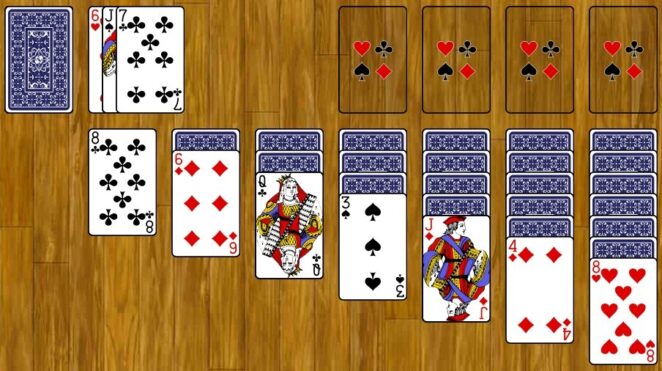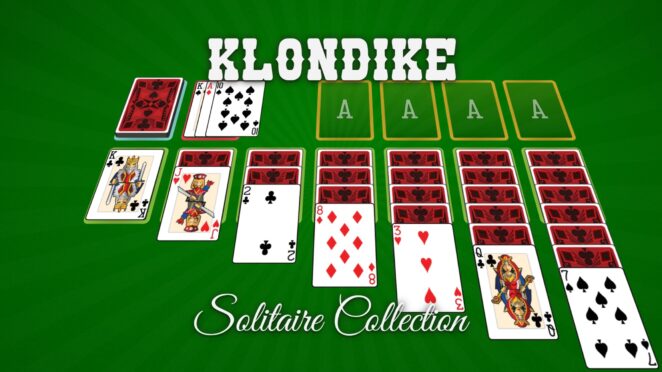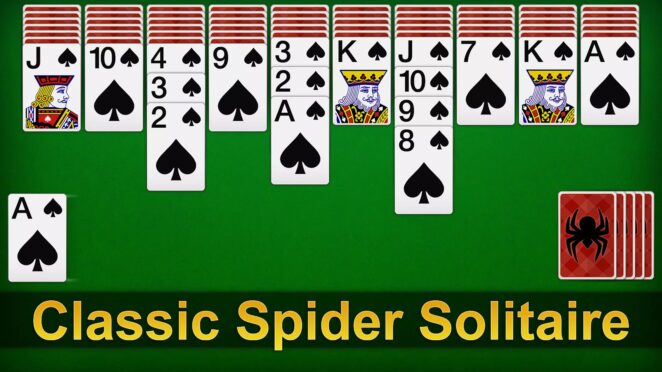Solitaire as a card game has been around for hundreds of years. The earliest documented mention of this card game is considered to have happened around the 19th century, and Patience is technically the first name for this game – since Patience is the European name and Solitaire is the North American name.
One of the theories around the creation of this game revolves around its potential connection to cartomancy – with the overall timing of Patience appearing in roughly the same time frame as the first cartomanic card layouts. There is also at least one version of Patience from 1895 that was created for cartomancy purposes in the first place.
French Influence and Early Popularity

Most of the early mentions of Patience are French-adjacent, just as the game’s name is explained as a “test of patience” by players themselves. France was one of the first locations where Patience first exploded in popularity around the beginning of the 19th century. The North American version started gaining popularity more than a hundred years later, along with the name “Solitaire” instead of “Patience”.
Solitaire is a card game genre; it includes hundreds of recorded game variations and even more examples that were never popular enough to be recorded at all. Some of these games are purely single-player, while others can be played by two, three, or even four players.
Solitaire Renaissance in the 1990s
Solitaire is also one of the few card game genres that experienced a renaissance of sorts in the year 1990 and beyond – with the introduction of Klondike Solitaire as a playable game in all Windows operating systems since Windows 3.0. This same development is also the biggest reason why Klondike Solitaire is now considered the most popular version of Solitaire by far.
Another notable development in Solitaire’s history is that the Internet’s widespread popularity led to many websites offering different Solitaire versions to be played for free with no downloads. Some websites also add various features to these games, making them more exciting and engaging.
Solitaire Social is an excellent example of an online platform that can offer multiple versions of Solitaire for free. Not only can it offer a competitive take on the traditional Solitaire card game (also called Solitaire Social), but there are also multiple traditional Solitaire types that can be played on the same website.
Klondike Solitaire: A Single-Player Classic

The first example is Klondike Solitaire. It can only be played by one person, and no multiplayer aspect is included in this specific game (it is not the same as Solitaire Social). It has a simple ruleset that can be learned by practically anyone in a matter of minutes.
The game is played using a single stack of 52 cards. The first step of the setup is to separate these cards in two groups – 24 and 28 cards, respectively. A group that consists of 28 cards is separated again to form seven columns. These columns has to be arranged in a specific order where the first column includes one card, the second column includes two cards, and so on.
Only the top card of each column has to be revealed, and revealing the rest of the cards is one of the game’s goals. This specific setup creates a noticeable triangle shape, making Klondike Solitaire easier to recognize. The second element of this setup is the foundation – four blank card placements called foundations. Moving cards in these foundations in a specific order (Ace to King) is the main goal of Klondike Solitaire.
The last element of this Solitaire version is the card deck, consisting of 24 remaining cards placed in a single deck with none facing upwards. Clicking on this deck reveals either one or three cards from it, and the top card is the only one that can be used in the game at a time. The main goal of this game is to fill all four of the foundations with appropriate card sets.
Spider Solitaire: Complexity and Challenge

Another example of a popular Solitaire variation that can be played online on the Solitaire Social website is the Spider Solitaire (2 suits version). It is pretty similar to Klondike with its primary goal – filling up the foundation of the board with cards in a specific order.
This is also where the similarities between the two game versions end. Spider Solitaire can be played using one, two, or four card decks – although the Solitaire Social version uses the more popular 2-suit version. The game field consists of eight foundation fields, ten columns in the main game field, and a single stockpile field.
There are 54 cards in total that are placed in the main field – first four columns from the left side include 6 cards each, while other 6 fields include 5 cards each. Only the top card of each column can be revealed to begin. This concludes the overall setup for Spider Solitaire.
The game itself has a simple premise with a complicated gameplay. The goal is to collect cards in foundations from Ace to King, but the total number of cards makes it difficult to navigate sometimes. There is also the fact that cards from the stockpile can only be distributed in packs of 10 – one card for every single column. This specific mechanic makes the game even more challenging.
Conclusion
Solitaire is a popular card game genre, and both Klondike and Spider are some of its most popular variations. Learning to play these games is not difficult, and the games themselves could be played on the Solitaire Social website with ease.



